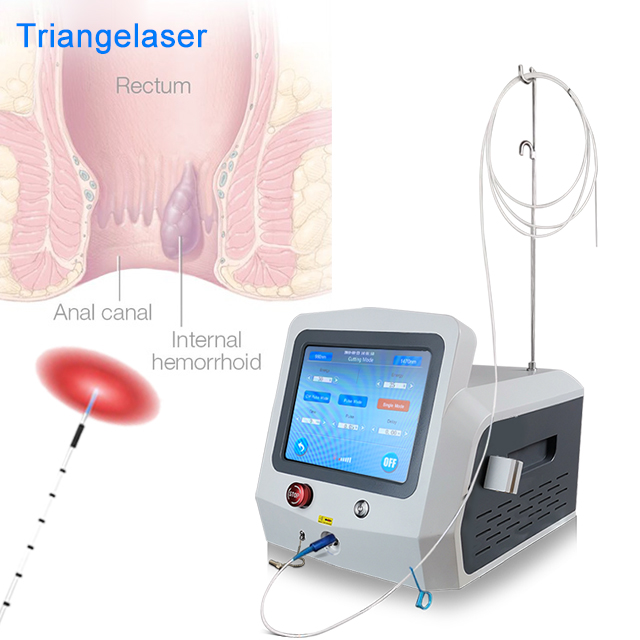If at-home treatments for hemorrhoids don't help you, you may need a medical procedure. There are several different procedures that your provider can do in the office. These procedures use different techniques to cause scar tissue to form in the hemorrhoids. This cuts off the blood supply, which usually shrinks the hemorrhoids. In severe cases, you may need surgery.
LHP® for Hemorrhoids (LaserHemorrhoidoPlasty)
This approach is used for the treatment of advanced hemorrhoids under appropriate anesthesia. The energy of the laser is inserted centrally into the hemorrhoidal node. By this technique the hemorrhoid can be treated according to its size without causing any damage to the anoderm or mucosa.
f reduction of the hemorrhoidal cushion is indicated (no matter if it is segmental or circular), this therapy will provide you with an improved patient outcome especially regarding pain and recovery compared to conventional surgical proceeding for 2nd and 3rd degree hemorrhoids. Under proper local or general anesthesia, the controlled laser energy deposition obliterates the nodes from the inside and preserves the mucosa and sphincter structures to an extremely high degree.
Tissue reduction in the hemorrhoidal node
Closure of the arteries entering the CCR feeding the hemorrhoidal cushion
Maximum preservation of muscle, anal canal lining, and mucosa
Restoration of the natural anatomical structure
The controlled emission of laser energy, which is applied submucosally, causes the hemorrhoidal mass to shrink. In addition, fibrotic reconstruction generates new connective tissue, which ensures that the mucosa adheres to the underlying tissue. This also prevents the occurrence or recurrence of a prolapse. LHP® is not
associated with any risk of stenosis. Healing is excellent because, unlike conventional surgeries, there are no incisions or stitches. Access into the hemorrhoid is achieved by entering through a small perianal port. By this approach no wounds are generated in the area of the anoderm or mucosa. As a result, the patient experiences less post- operative pain and can return to normal activities within a shorter space of time.
No incisions
No excisions
No open wounds
Reserch shows: Laser Hemorrhoidoplasty is a nearly pain-free,
minimally-invasive procedure of high long-term symptom relevance and patient satisfaction. 96 percent of all patients would advise others to undergo the same procedure and undergo it again personally. CED-patients can be treated by LHP unless they are in an acute stage and/or suffer from anorectal involvement.
With respect to reposition and tissue reduction, the functional effects of Laser Hemorrhoidoplasty are comparable to reconstructions according to Parks. Among our patient stock, LHP is characterized by high long-term symptom relevance and patient satisfaction. As regards the low number of complications suffered, we additionally refer to the high percentage of additional surgical procedures simultaneously carried out as well as to the treatments performed in the initial phase of this comparatively new minimally-invasive surgical procedure and the treatments that served for demonstration purposes. The surgery should from now on also be carried out by traditionally experienced surgeons. The best indication for it is segmental hemorrhoids of category three and two. Long-term complications are extremely rare. When it comes to circular confluent hemorrhoids or those of category 4a, we do not believe that this method serves to replace PPH and/or traditional treatments. An interesting aspect in terms of health-economics is the chance to perform this procedure on the growing number of patients suffering from coagulation disorders, whereas the frequency of specific complications does not experience any increase. The procedure’s drawback is the fact that probe and equipment are costly compared to traditional surgery. Prospective and comparative studies are required for further evaluation.
Post time: Aug-03-2022

